Wildlife In Africa
Animals in Africa
A Journey Through Africa’s Wild Heart
Africa is one of the last truly wild places on Earth—a continent where animals roam freely across vast landscapes, from open savannas to dense jungles. Whether it’s a lion’s roar echoing at dawn or a herd of elephants moving silently through the bush, Africa’s wildlife stirs something primal in all of us.
This is a land where nature takes center stage. Giraffes glide across the horizon, zebras create striped patterns on golden plains, and leopards slip like shadows through tall grass. Let’s dive into the most iconic and fascinating mammals that make Africa the ultimate destination for wildlife lovers.
Big Five : Africa’s Iconic Wildlife
The Big Five are the true stars of African safaris—each one powerful, unique, and unforgettable. From the roar of a lion to the silent grace of a leopard, these animals represent the wild beauty and raw spirit of Africa. Let’s take a closer look at what makes each of them so special.

African Lion
Meet the African lion, a symbol of regality and power in the heart of the continent’s sprawling savannahs. Known for their distinctive manes and commanding roars, these majestic cats are the undisputed rulers of their territories.
With a social structure centered around prides, African lions exhibit remarkable teamwork in hunting and protecting their young. Their prowess as apex predators is matched only by the awe-inspiring sight of them lounging under the African sun, creating an indelible image of the wild beauty that defines Africa’s landscapes.
African Elephant
The African Elephant is the largest land mammal on Earth and a majestic icon of the African savannah. These gentle giants are characterized by their impressive size, distinctive large ears, and long, curved tusks. African Elephants are social animals, forming tight-knit family herds led by a matriarch.
Distributed across various habitats, from dense forests to open grasslands, African Elephants play a crucial role in shaping ecosystems. They are herbivores with a voracious appetite, consuming an average of 300 pounds of vegetation daily.
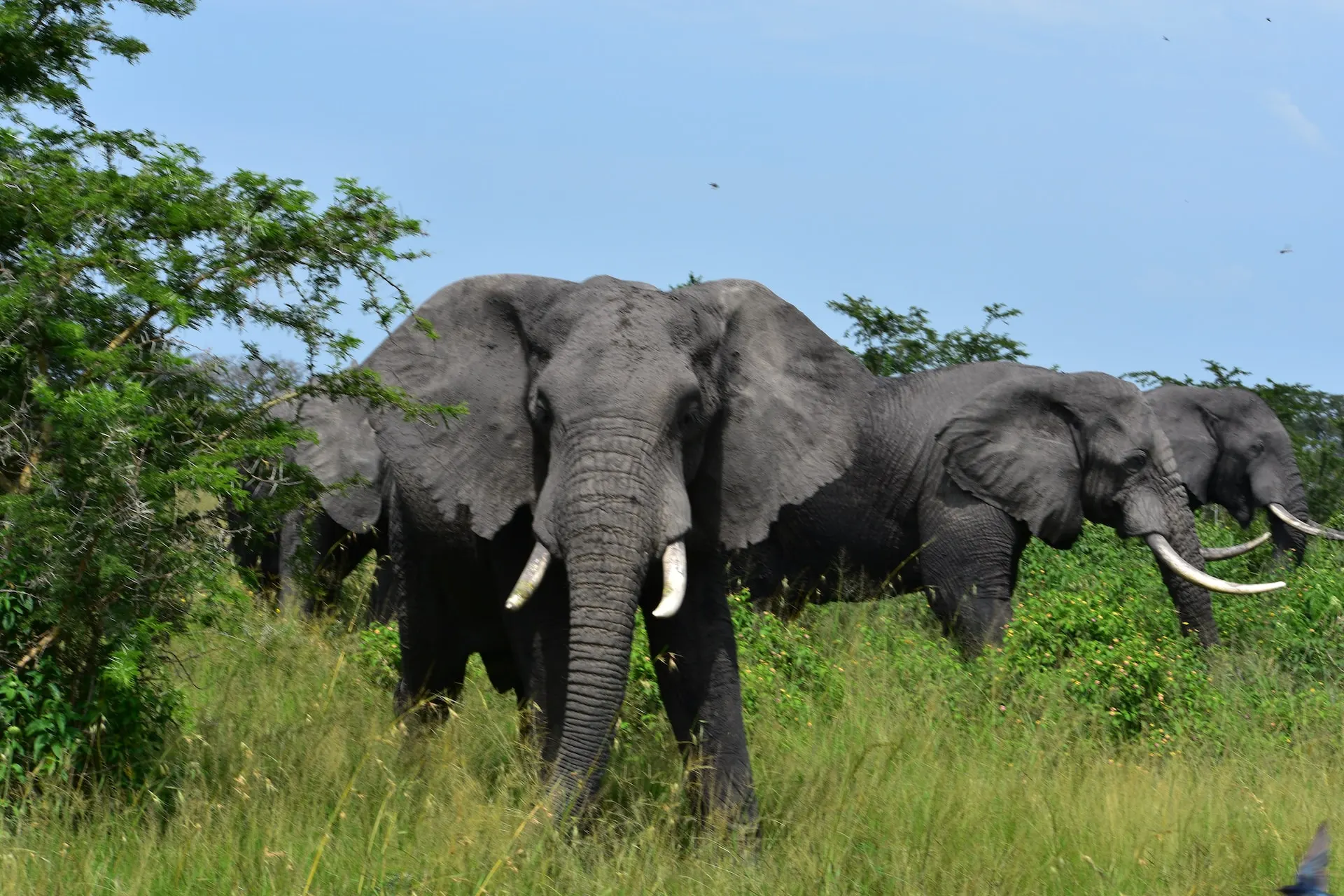

Cape Buffalo
The Cape Buffalo, scientifically known as Syncerus caffer, stands as one of Africa’s most formidable and iconic herbivores. Famous for its robust build and distinctive horns, this species is a staple of the continent’s savannah and grassland ecosystems.
With a massive frame and a distinctive set of sweeping horns, the Cape Buffalo is often recognized for its formidable appearance. These herbivores form large herds, creating a sense of community and safety in numbers. Interestingly, they are known for their unpredictable nature, making them one of the “Big Five” game animals sought after by wildlife enthusiasts on safari.
They are considered one of Africa’s most dangerous animals, known for their unpredictable and potentially aggressive behavior.
Leopard
Meet the leopard, a cool and mysterious big cat that adds excitement to Africa’s amazing wildlife. This awesome feline, scientifically called Panthera pardus pardus, is part of the famous “Big Five” animals you will spot on safaris.
Imagine a leopard with a beautiful golden-yellow coat covered in cool black spots, it is like wearing a stylish outfit in the wild! African leopards are skilled hunters with a preference for nocturnal activities. Their solitary nature and ability to thrive in various habitats, from dense forests to open savannahs, contribute to their reputation as elusive and mysterious creatures.

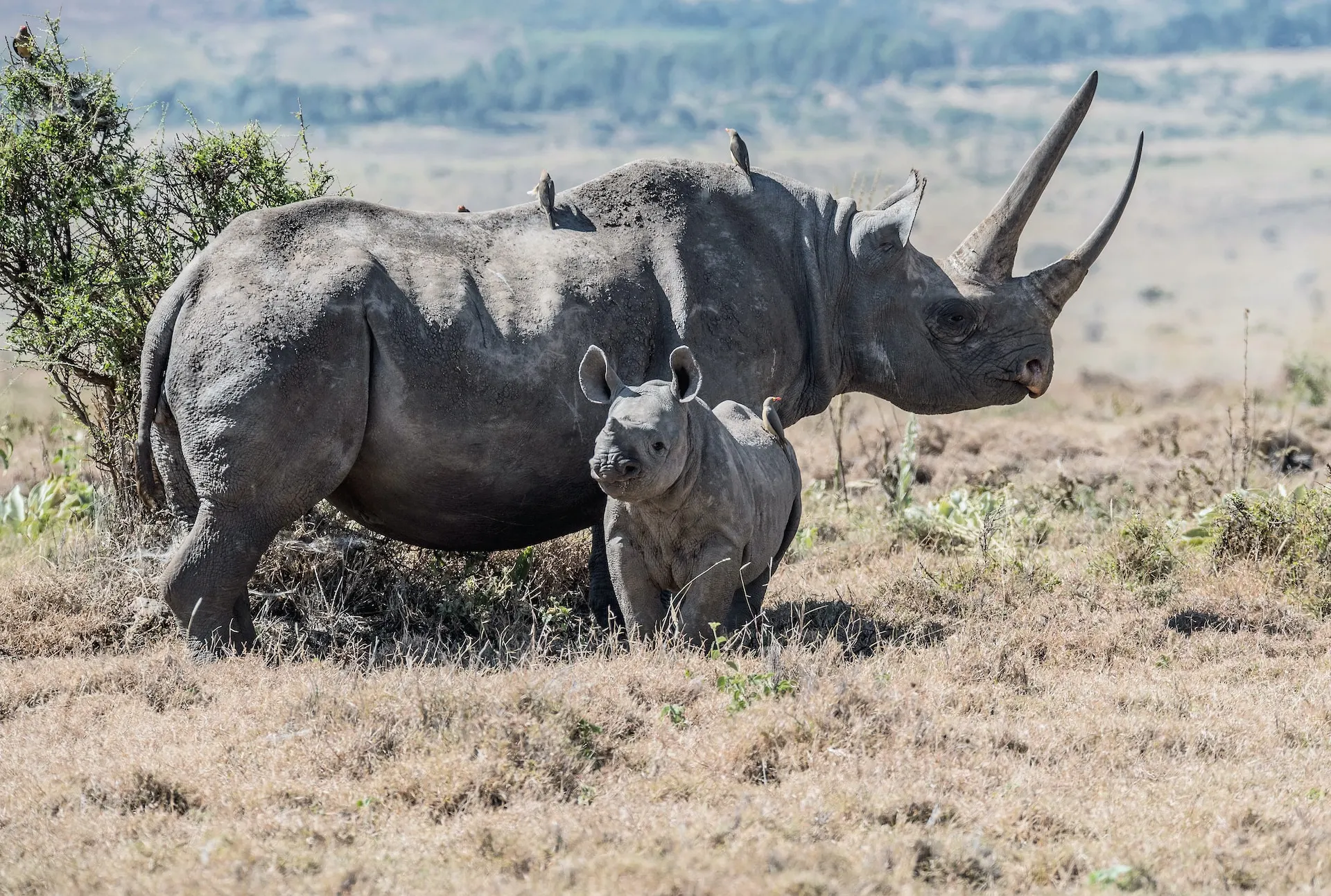
Rhinoceros
Step into Africa’s wild wonder, where the rhinoceros, a true icon of the “Big Five,” roams the landscapes in all its majestic glory. Africa boasts not just one, but two incredible rhino species, the black rhino and the white rhino, each adding its own flair to the continent’s natural beauty.
Meet the black rhino, a bit of a loner with a pointy lip made for picking out the tastiest leaves and twigs. Then there’s the white rhino, more of a social butterfly with a wide mouth built for munching on grasses alongside its rhino pals.
Iconic African Mammals You Can’t Miss
Africa’s wildlife isn’t limited to just five species. This continent is home to a wide variety of iconic mammals that roam its plains, forests, wetlands, and deserts. Each of these animals plays a key role in the balance of nature and the safari experience.
Wildebeest
Meet the wildebeest, a distinctive creature roaming Africa’s vast plains with a horse-like face and curving horns. These herbivores form massive herds, creating a breathtaking spectacle as they journey together. Known for their remarkable annual migration, millions of wildebeests traverse from Serengeti to masai mara in search of fresh grass and water. Facing challenges like river crossings with lurking crocodiles, their collective strength and survival instincts make this migration a testament to the wonders of nature.


Zebra
Step into the vibrant landscapes of Africa, where the zebra, with its striking black and white stripes, steals the show. These quirky characters are like the artists of the savannah, painting a picture of wild beauty against the grassy canvas.
Zebras are the social butterflies of the animal kingdom. They roll deep in groups called “dazzles”. Stripes are not just for show. They are like the zebra’s own fashion statement and armor combo. Camouflage for hiding from the big cats, and a unique style that’s as individual as our fingerprints are for us.
Giraffe
Giraffe, the tallest land mammal, roams the vast savannahs and open woodlands. Giraffes, known for their distinctive long necks and striking spotted coats, are integral to the rich biodiversity of the African continent.
These gentle giants, characterized by their unique pattern of irregular spots, play a vital role in the ecosystem as herbivores, primarily feeding on acacia leaves. Living in loose social groups called towers, giraffes exhibit a fascinating social structure, with each tower typically led by a dominant male. Their remarkable adaptations, including a prehensile tongue and a powerful kick, contribute to their survival in the wild.
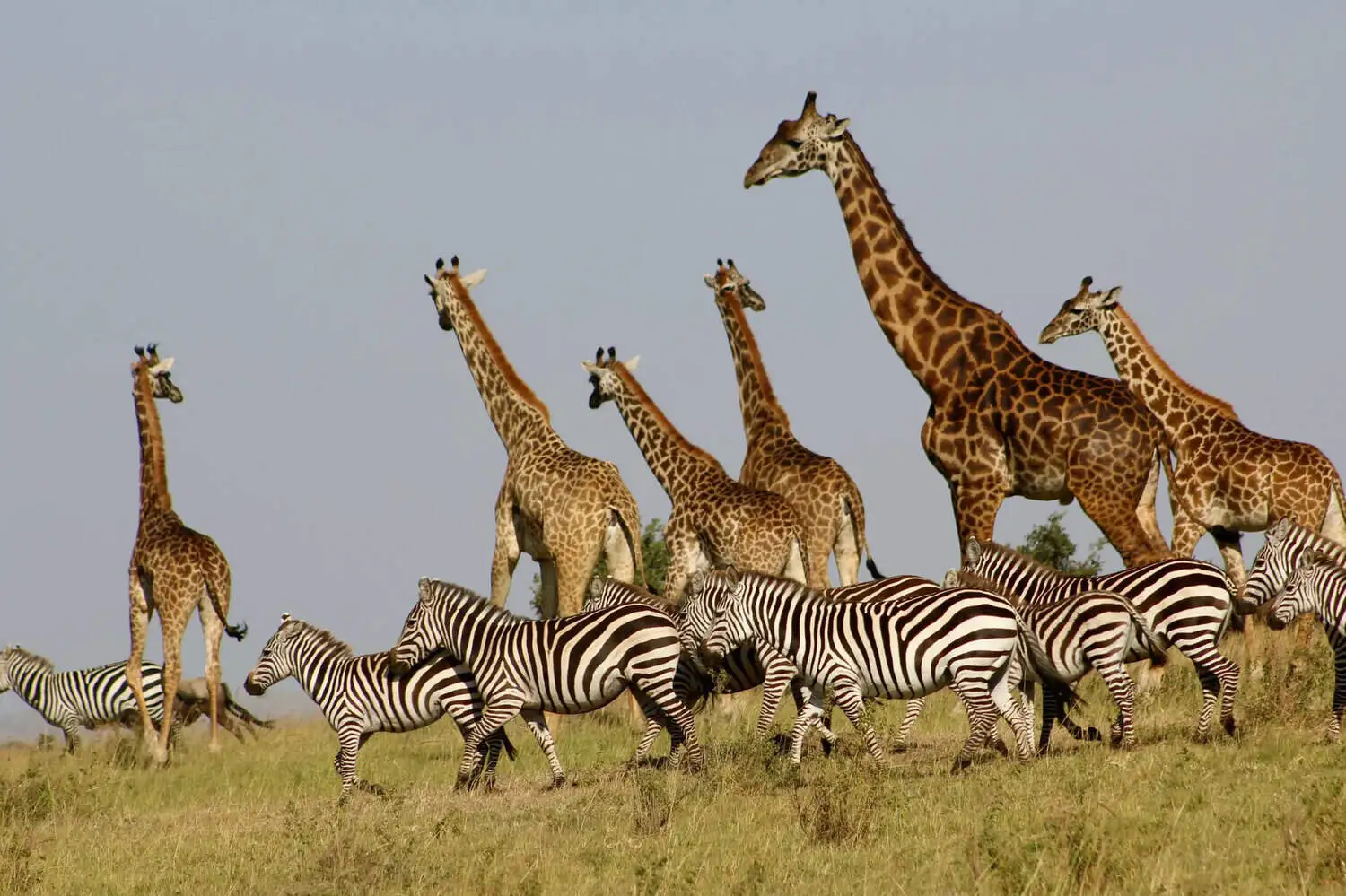

Hippopotamus
Welcome to the watery realms of Africa, where the mighty hippopotamus, often dubbed the “river horse,” commands the waterways with its formidable presence. These semi-aquatic mammals are a defining feature of African landscapes, particularly in rivers, lakes, and swamps.
Characterized by their massive size, barrel-shaped bodies, and large mouths revealing formidable tusks, hippos are herbivores that spend much of their time submerged in water. Despite their seemingly docile appearance, they are known for their aggressiveness, making them one of Africa’s most dangerous animals.
Cheetah
Step into the fast lane of the African plains, where the cheetah—nature’s ultimate sprinter—rules the open landscapes with unmatched speed and grace. Built for bursts of acceleration, these sleek hunters rely on stealth and precision to chase down their prey.
Despite being fierce hunters, cheetahs are vulnerable to competition from larger carnivores and habitat loss. Their shy nature and delicate balance in the wild make them one of Africa’s most fascinating yet fragile predators.
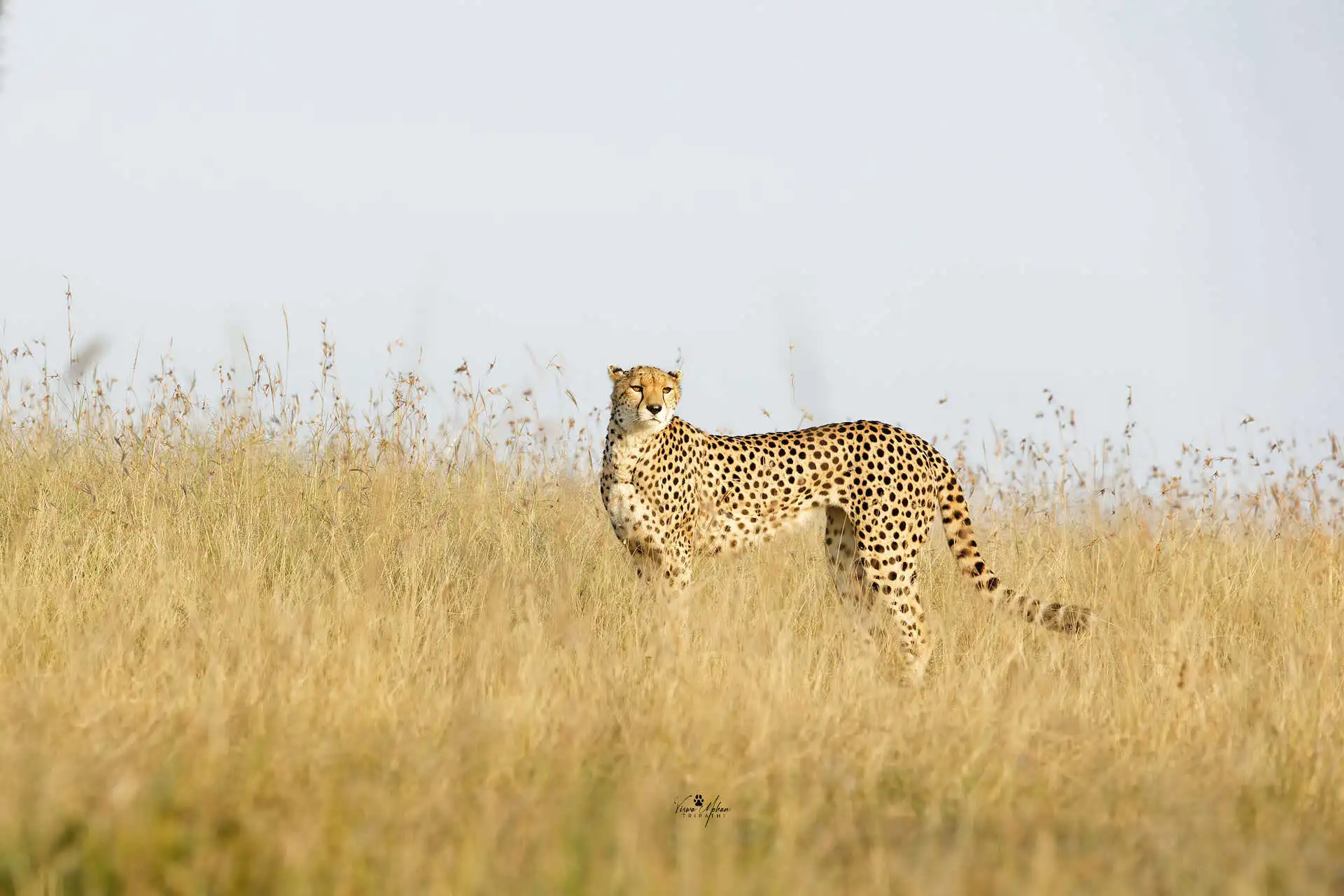
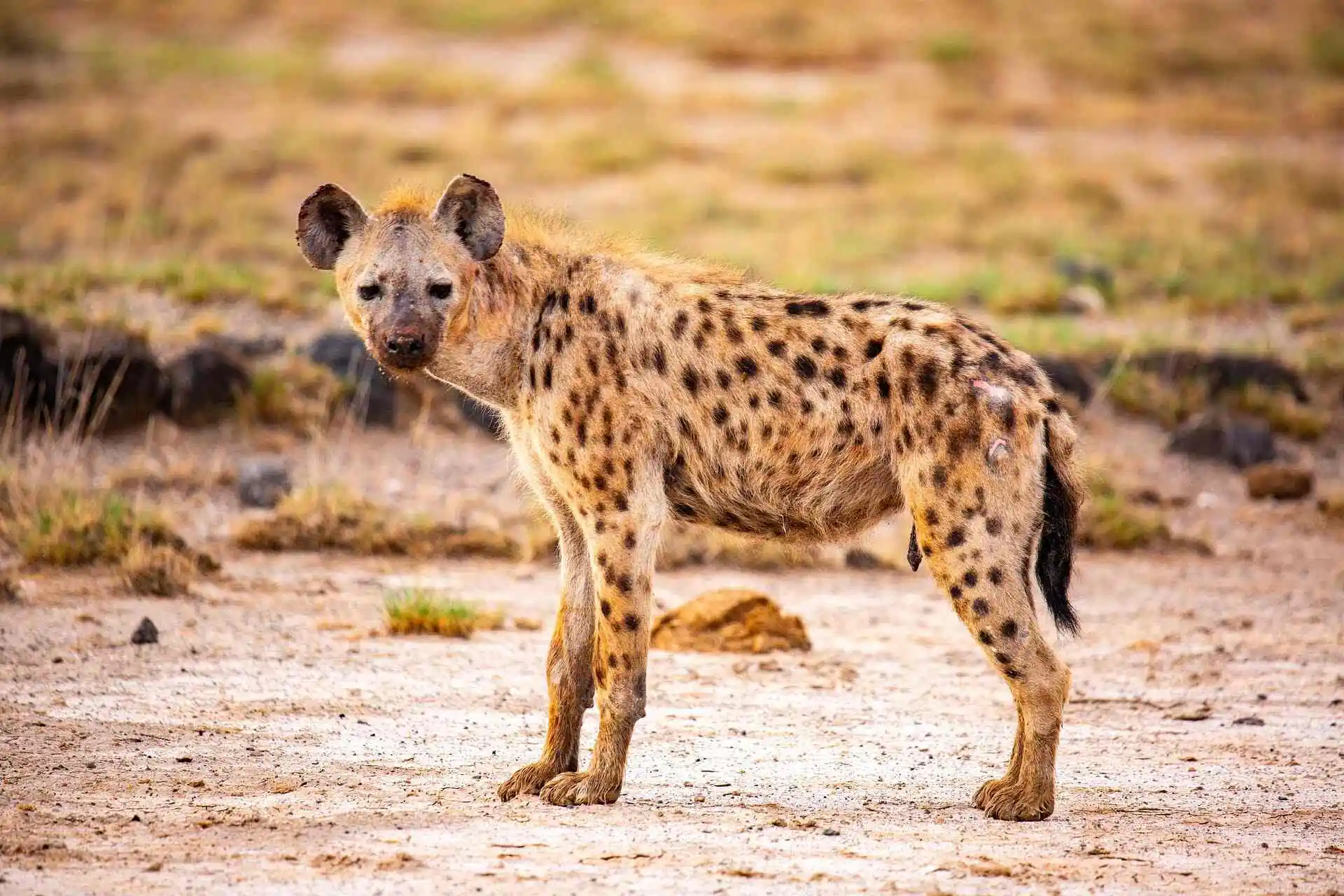
Hyena
Venture into the wild where the hyena, one of Africa’s most misunderstood predators, plays a vital role in the ecosystem. Known for their eerie laughter and strong social bonds, hyenas are far more complex than their reputation suggests.
With powerful jaws and incredible endurance, they’re both skilled hunters and efficient scavengers. Living in matriarchal clans, hyenas thrive through teamwork and adaptability, proving they’re true survivors of the savanna.
Warthog
Meet the warthog—Africa’s tough, quirky little survivor. With their tusks, flat snouts, and habit of trotting with their tails straight up, warthogs are both amusing and resilient.
Often found grazing on open plains or darting into burrows, they rely on speed and alertness to avoid predators. Despite their comical look, warthogs are well-adapted and play a key role in the savanna’s dynamic ecosystem.
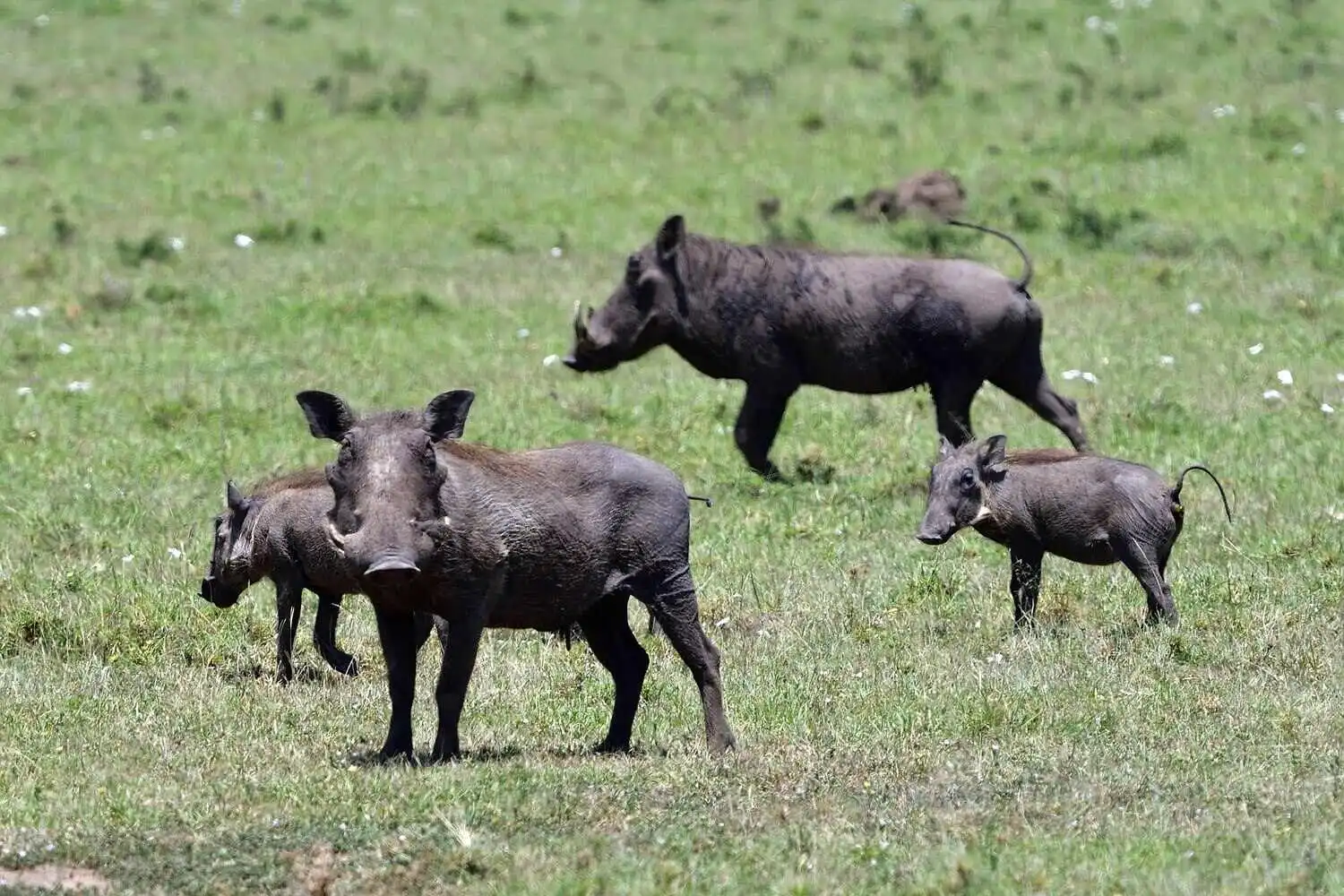
Other Notable Mammals Found in Africa
Beyond the headliners are the hidden gems—lesser-known but equally fascinating mammals that bring depth to Africa’s biodiversity. These animals may not always make the front page, but they play vital roles in the ecosystem and often surprise travelers with their unique behaviors.
Gorilla
Meet the majestic gorilla, a symbol of strength and familial bonds, reigns supreme in lush jungles. Gorillas, classified as great apes and sharing about 98% of their DNA with humans, command attention as a keystone species, contributing to the biodiversity of the African rainforests.
Inhabiting dense forests, gorillas live in close-knit family groups led by a dominant silverback, the adult male. These gentle giants, a vital part of ecotourism, draw enthusiasts eager to witness their natural behaviors, emphasizing the importance of gorilla conservation efforts. Gorillas are herbivores, primarily consuming vegetation such as leaves, stems, and fruits.
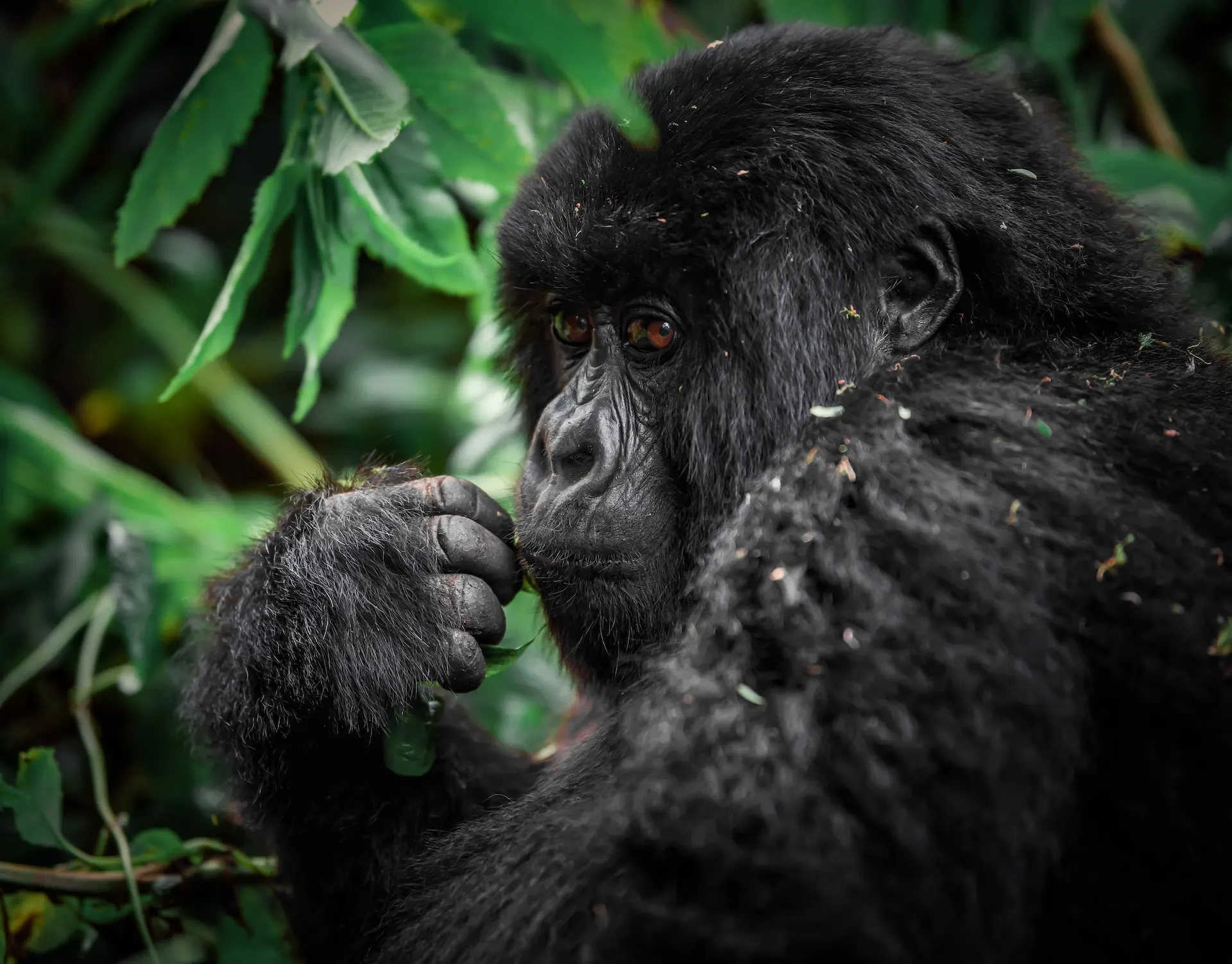

Hartebeest
Graceful yet oddly shaped, the hartebeest stands out on the African plains with its long face and sloping back. These antelopes may look awkward, but they’re fast runners and surprisingly agile.
Living in open grasslands, hartebeests are constantly on the move, grazing in herds and staying alert to predators. Their strong herding instincts and endurance make them a vital part of Africa’s grazing wildlife.
Serval Cat
Step into the tall grasses of Africa, where the serval cat moves with quiet elegance and lightning speed. With its long legs, large ears, and golden spotted coat, the serval is built for hunting in dense vegetation and wetlands.
This small wild cat is a master of precision—leaping high to catch birds or using its keen hearing to locate prey underground. Though elusive, the serval plays a fascinating role in Africa’s diverse predator lineup.
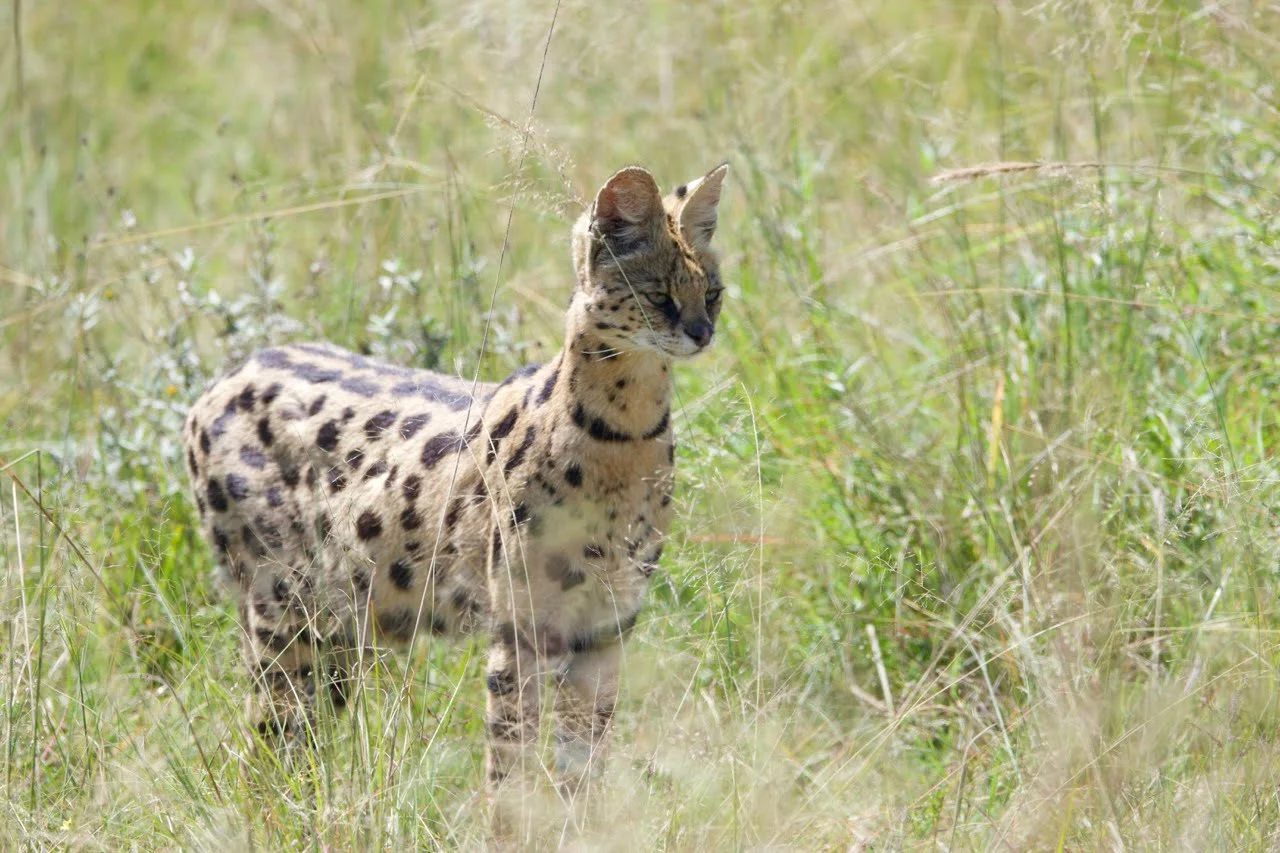

Caracal Cat
Sleek, powerful, and crowned with striking tufted ears, the caracal is one of Africa’s most stylish predators. Often called the “desert lynx,” this wild cat is built for stealth and sudden bursts of speed.
Caracals are known for their incredible leaping ability—able to snatch birds straight out of the air. Solitary and elusive, they roam savannas and scrublands, thriving in some of Africa’s harshest terrains.
African Wild Dog
Meet Africa’s most efficient hunter—the African wild dog. With their colorful patchy coats and large rounded ears, these social canines are as striking as they are skilled.
Living and hunting in tight-knit packs, wild dogs rely on teamwork and strategy to take down prey. Though endangered, their high-energy lifestyle and strong bonds make them one of Africa’s most fascinating predators.

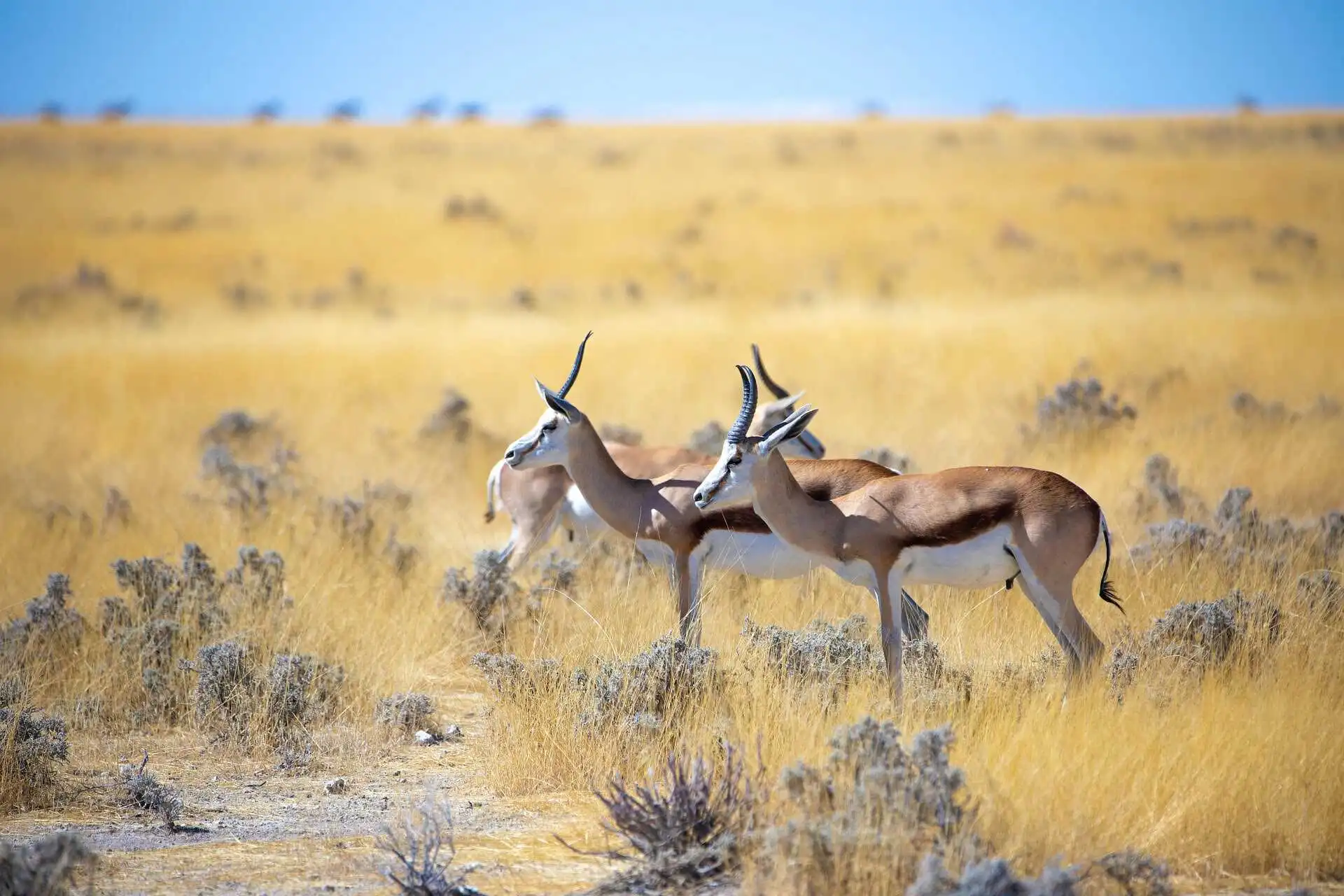
Thomson’s Gazelle
Small, swift, and always alert, the Thomson’s gazelle is a familiar sight on Africa’s open plains. With its graceful frame and bold black side stripe, it’s both elegant and built for speed.
Often seen in large herds, these gazelles rely on agility and quick reflexes to outmaneuver predators. Their constant vigilance and bursts of energy make them a vital part of the savanna’s rhythm of life.
Impala
Elegant and athletic, the impala is one of Africa’s most graceful antelopes. With its reddish coat and lyre-shaped horns, it blends beauty with agility.
Often found in mixed herds, impalas are known for their impressive leaps—sometimes over 10 feet high—to escape predators. Their alert nature and speed help them survive in the wild, where danger is never far away.
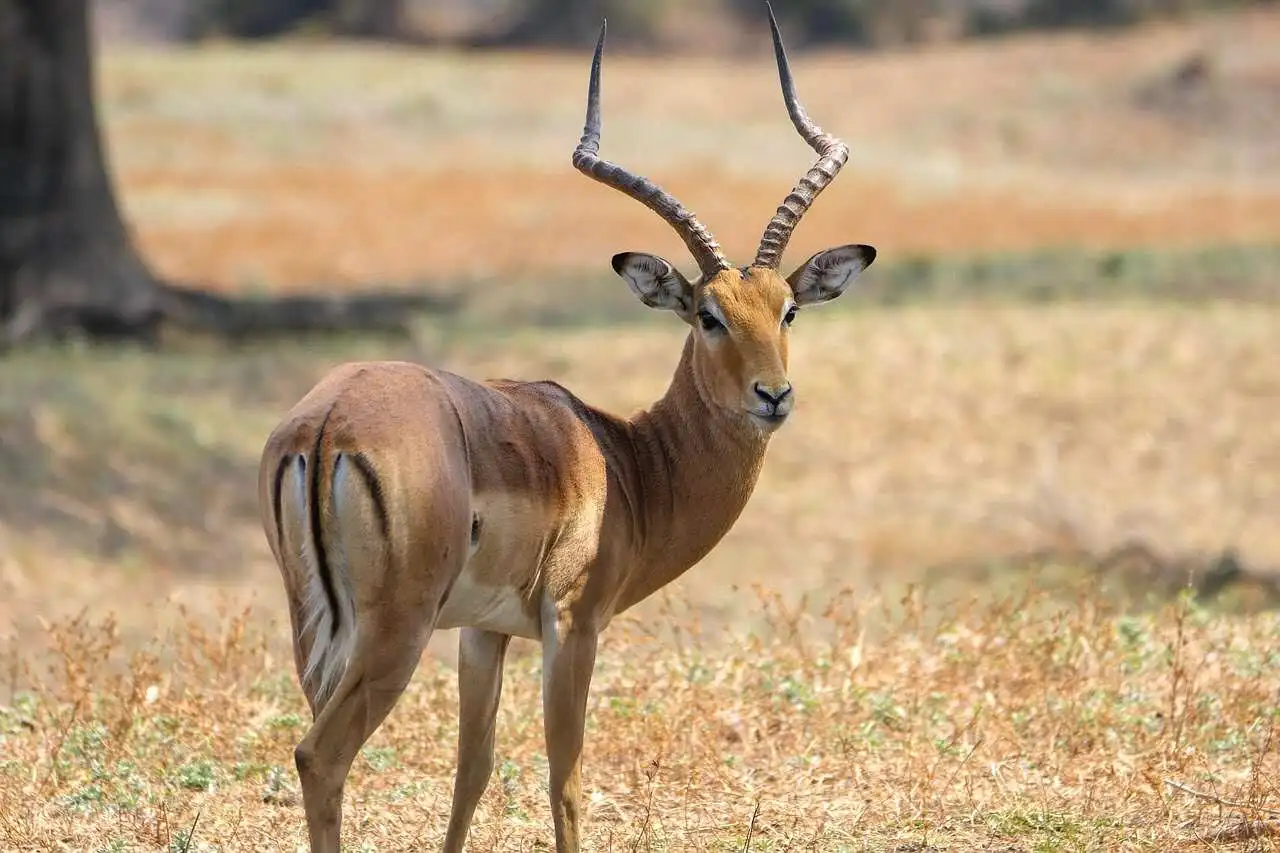

Eland
The eland is Africa’s largest antelope, known for its impressive size and spiral horns. Despite their bulk, elands are surprisingly agile and often move in loose herds across open plains and woodlands.
They graze and browse with ease, adapting well to different environments. Their calm demeanor and strength make them gentle giants of the savanna.
Topi
Topis are swift, graceful antelopes with striking reddish-brown coats and dark faces. They thrive in open grasslands, often forming herds that keep a watchful eye for predators.
Famous for their speed and stamina, topis are agile runners who use teamwork to stay safe on the plains.

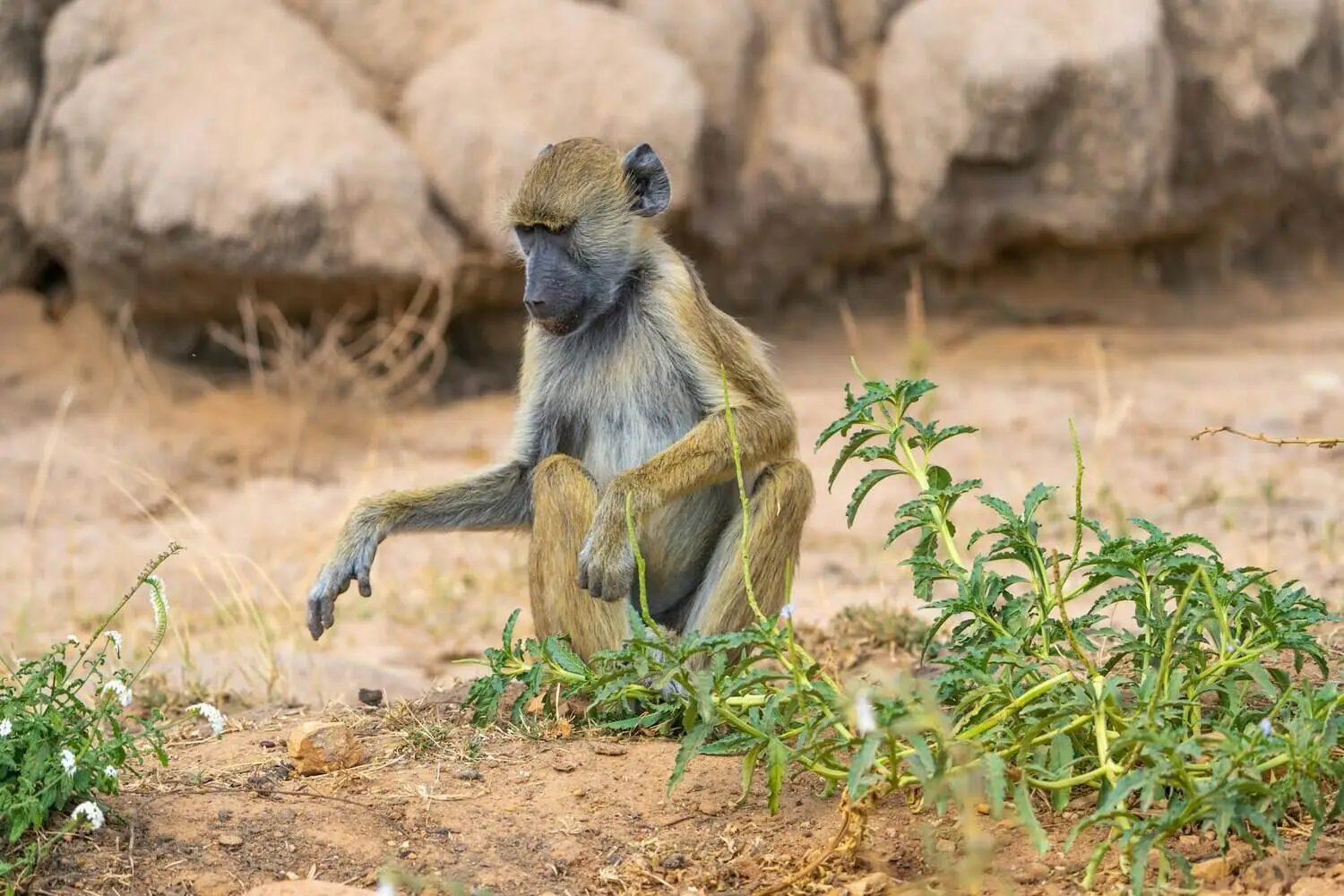
Baboon
Baboons are highly social and intelligent primates, recognized by their expressive faces and powerful builds. Found across various African habitats, they live in large troops with complex hierarchies.
Known for their adaptability, baboons are curious and resourceful, often interacting with their surroundings in fascinating ways.
Are you excited to see wildlife at Africa, because wildlife at Africa are waiting for you!
